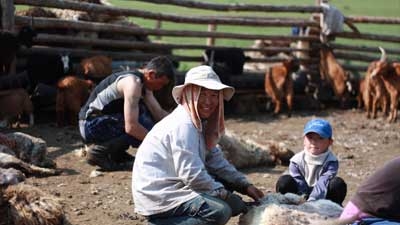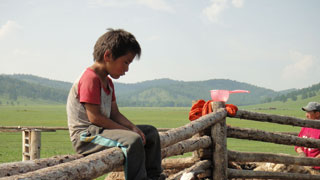Overview
The Sustainable Livelihoods Project II (2008-2012) is the second part of a three-phase program, which aims to enhance livelihood security and sustainability by scaling up institutional mechanisms that reduce the vulnerability of communities throughout Mongolia.
The project, launched in 2008, has benefited a total of 1,763,432 people and 505,745 households: over 50 percent of the beneficiaries were women; 16 percent were below the poverty line and 19 percent were herders.
Challenge
Mongolia’s economy has grown rapidly due to the growth of the commodities sector; however, it remains highly vulnerable to shocks. In 2010, the dzud (harsh winter) depleted over 20 percent of livestock. Similarly in 1999 and 2001, weather extremes caused the loss of 30 percent of livestock. Thus although poverty reduction has been achieved, benefits have been inequitable. Poverty incidence in rural areas is 46.6 percent compared to 26.9 percent in urban areas.
Social service provisions remain of concern. Due to lack of access, poor educational quality and poverty, rural children attend fewer years of schooling. Although financial services have been strengthened in recent years, many rural residents still lack access to services like credit lines that could reduce vulnerability and build economic assets.
Such issues prompt migration to urban centers, in particular to Ulaanbaatar, where slum ger (nomadic tents) areas on the urban fringe bring additional development challenges.
Approach
The project is structured around three core components: (i) Pastoral Risk Management; (ii) Community Initiatives and (iii) Microfinance Development.
Pastoral Risk Management is to continue strengthening the capacity of rural families, especially livestock herder households, to manage environmental, financial, social and other forms of risk that can adversely affect their livelihoods.
Community Initiatives is to establish effective, transparent and socially inclusive mechanisms that empower citizens to identify and implement small public facility improvement projects nationwide. The community members are key participants in the identification of priorities and the formulation and implementation of demand-driven projects; and play an important role in supervision, monitoring and final evaluation of the project impact. The appraisal and approval of project is decentralized and undertaken at the local level. Communities and local government co-finance all sub-projects.
Microfinance Development is to expand the outreach of financially and institutionally sustainable micro-finance services to the poor and vulnerable in rural Mongolia.
Results
Project activities are in many sectors affecting rural communities. Highlights include:
Pastoral Management
- Households making winter preparations increased by 57 percent.
- More than 36,000 herder families have improved their pastoral management skills.
Microfinance
- 39,389 microfinance loans have been disbursed, benefiting 181,470 people directly or indirectly.
- 96 percent of sub-borrowers from the Micro-finance Development Fund report an improvement in livelihood as a result of the loans.
Health
- 1,088 hospitals in rural areas have been upgraded and funded for medical equipment that was previously only available in provincial capitals. This has been welcomed by rural citizens as they save time and traveling large distances for routine check-ups and treatment.
Education
- Children staying in school dormitories, essential in a nomadic society, increased by 169 percent; drop-out rate was reduced by 82 percent; kindergarten enrollment rate is up 69 percent.
Infrastructure
- 68 human consumption wells have been built; 13 wells have been equipped with filtering facilities; 97 have been rehabilitated.
- Renewable energy projects have also been implemented to provide power to public facilities.
- Internet services for schools, commercial customers and Internet cafés in 34 prime soum centers.


